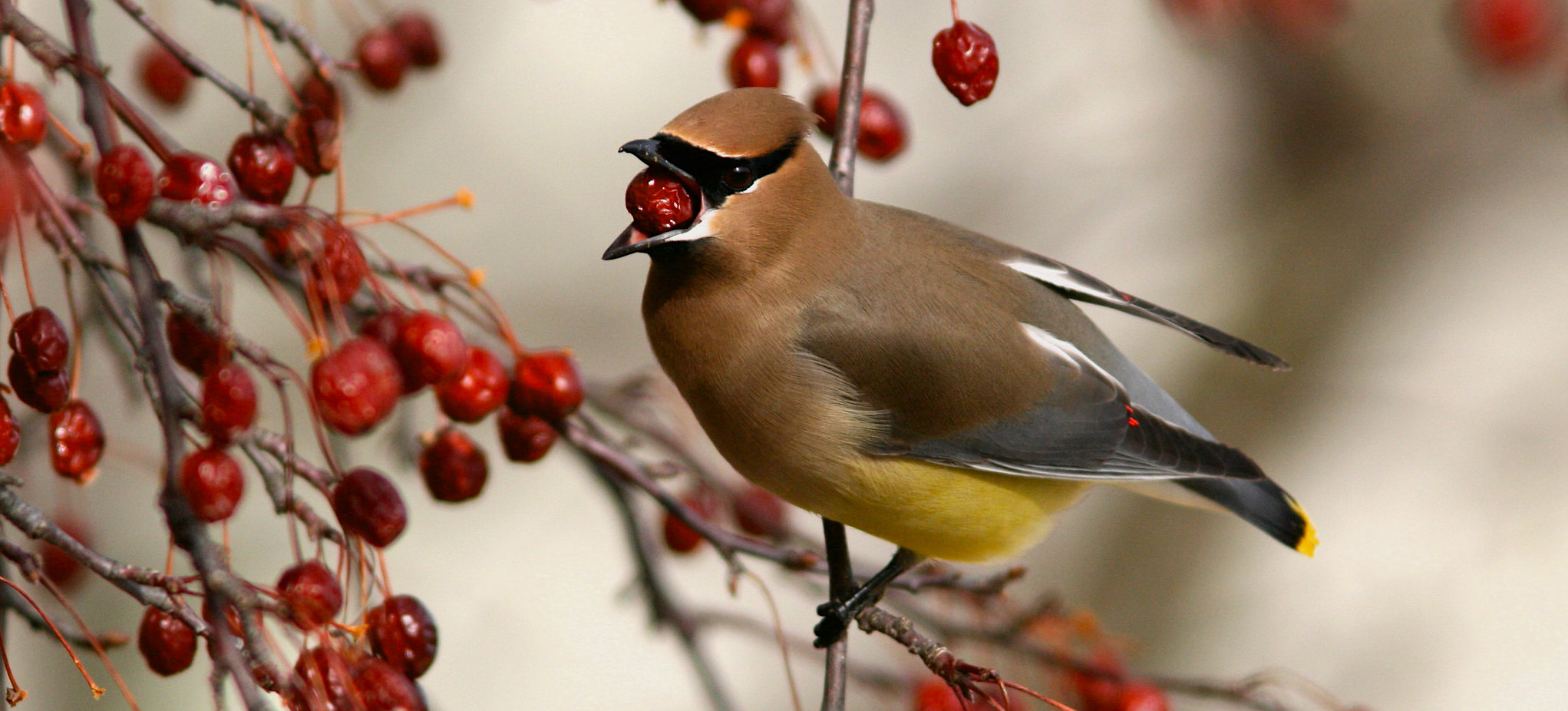BY KIERAN LINDSEY, PhD
Whenever I see a Cedar Waxwing (Bombycilla cedrorum) at this time of year I’m reminded of my days as Executive Director of the Texas Wildlife Rehabilitation Center, back in the late 1990s. For a few weeks every winter, the Waxwings would appear by the cardboard box-full and the clinic would turn into… well, a different kind of rehab center.
With their handsome, distinctive plumage, even a newbie birder can easily recognize this species. Their yellow tail- and red wing-tips look as if they’ve been dipped in sealing wax—thus the name. With a range that covers much of North America, Waxwings aren’t rare but they’re not as common as some of our iconic backyard birds, so it’s always a thrill when they’re in the neighborhood.

They’re one of a handful of avians in the U.S. and Canada whose diet is composed largely (but not entirely) of fruit. This is an extremely helpful characteristic when one shares a breeding territory with brown-headed cowbirds (Molothrus ater) and other nesting parasites — species that leave their eggs in the nests of other birds so the cowbird chicks are adopted and cared for like biological children. In fact, the foster nestlings often out-compete the surrogate’s own offspring when food is being passed out. However, the high-sugar diet provided by Waxwing parents, while perfect for their own kids, causes the cowbird chick to waste away.
Waxwing adaptability has allowed them to benefit from the introduction of non-native fruit-bearing plants used in urban and suburban landscaping. For example, they seem to love honeysuckle… and it shows. The red pigment in the exotic vine’s berries can turn the bird’s canary tail-tips bright orange, a plumage change birders and ornithologists first began to notice in the 1960s, around the same time honeysuckle was growing more popular with suburban homeowners.
Waxwings travel in flocks that may include 40+ individuals, all searching for pyracantha and privet, choke cherries, mulberries, and any other tree or shrub that bears sugary fruit. Once they’ve gobbled up every last berry they move along without a backward glance.

Unless the fruit is spiked.
It’s not a matter of someone trying to contribute to avian delinquency. From late autumn until plants have produced new spring and summer crops, the previous season’s berries, drupes, drupelets, pomes, and other sweet seed containers hang on, growing increasingly less… fresh, shall we say. Temperature fluctuations and the presence of wild yeasts often will cause fruit to ferment in situ.

Migration and colder temperatures make for voracious birds and the waxwings are carbo-loading as fast as they can swallow. They don’t seem to notice some of the snacks pack a punch. When you weigh slightly more than an ounce, the alcohol content doesn’t have to be very high to knock you for a loop. Next thing you know, birds are careening around on the front lawn as if they were leaving a New Year’s Eve bash.

It can look rather comical but it’s no laughing matter. Many inebriated birds are seriously injured or are killed when they drunkenly fly into cars and windows.
Good Samaritans across the country scoop disoriented birds into cardboard boxes and head for the nearest wildlife rehabilitation center. There, the birds are given a head-to-toe, beak-to-tail examination. Most of the patients are simply allowed to safely sleep it off in a warm, dark room before being released to continue their travels… although they probably set out with a doozy of a hangover.


